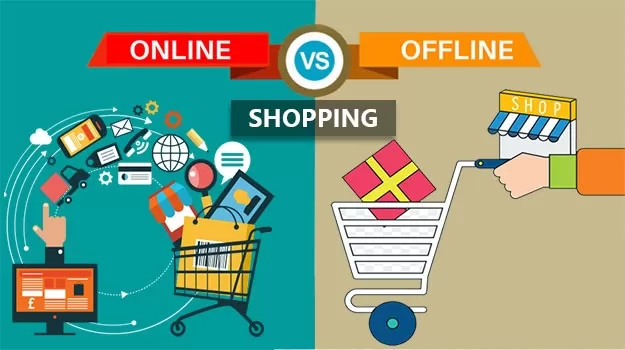difference between store sites and companies
Store sites and companies are different concepts, but they are often interconnected.
A store site refers specifically to a website that is designed and developed to facilitate online sales of products or services. It is an e-commerce platform where customers can browse, select, and purchase items online. Store sites typically have features such as product listings, shopping carts, secure payment gateways, and order management systems. They focus on providing a seamless and convenient online shopping experience for customers.
On the other hand, a company is a broader term that refers to an entity or organization engaged in business activities. A company can have various operations, including manufacturing, distribution, sales, and customer service. It may have physical retail stores, an online presence, or a combination of both. The company’s website serves as its online representation, providing information about the company, its products or services, and its brand.
While a store site is primarily focused on facilitating online sales, a company’s website can serve multiple purposes. It may showcase the company’s history, mission, values, team, and other relevant information. It can also provide customer support, contact information, and resources for existing and potential customers.
In many cases, companies that have physical retail stores or other offline operations will have a store site as part of their overall online presence. This allows them to reach a wider audience, provide convenient online shopping options, and complement their brick-and-mortar business.
In summary, a store site is a website specifically designed for e-commerce and online sales, while a company’s website serves as a broader online representation of the company, providing information about its operations, products or services, and brand.

Can you give me an example of a company that has both physical retail stores and a store site?
Certainly! One example of a company that has both physical retail stores and a store site is “Best Buy.” Best Buy is a multinational retailer that specializes in consumer electronics and appliances. They have physical stores located in various cities where customers can visit, browse products, and make purchases in person.
In addition to their physical retail presence, Best Buy also operates a robust online store, which serves as their store site. The Best Buy website allows customers to browse their extensive product catalog, compare prices, read customer reviews, and make purchases online. The website offers features such as product search, filtering options, and secure online payment methods.
Best Buy’s store site provides customers with the convenience of shopping from anywhere at any time, while their physical retail stores offer a hands-on experience for customers who prefer to see and interact with products before making a purchase. The combination of physical stores and a store site allows Best Buy to cater to a wider range of customer preferences and provide a seamless shopping experience both online and offline.
what is the first thing to consider when designing a website?
What are some common features of a store site?
A store site typically includes a variety of features designed to facilitate online shopping and enhance the user experience. Here are some common features you might find on a store site:
Product Listings:
A store site displays a catalog of products or services available for purchase. Each product listing typically includes details such as images, descriptions, specifications, pricing, and customer reviews.
Shopping Cart:
A shopping cart feature allows users to add products to their virtual cart while they continue browsing. It enables users to review and modify their selections before proceeding to checkout.
Secure Checkout:
A store site incorporates a secure checkout process that encrypts sensitive customer information to protect it during online transactions. It typically includes payment options, billing and shipping addresses, and order summary.
User Accounts
: User accounts allow customers to create profiles, store their personal information, track order history, save payment methods, and manage shipping addresses. Accounts may also provide personalized recommendations and wish lists.
Search Functionality:
A search feature allows users to quickly find specific products or filter results based on criteria such as category, price range, brand, and other attributes.
Filtering and Sorting:
Filtering and sorting options enable customers to refine their search results based on specific attributes, such as size, color, price, popularity, and customer ratings.
Product Reviews and Ratings:
Providing user-generated product reviews and ratings helps users make informed purchasing decisions and adds credibility to the store site.
Inventory Management:
The store site may have an inventory management system that tracks product availability in real-time, ensuring that customers are aware of whether a product is in stock or out of stock.
Order Tracking:
A store site often offers order tracking functionality, allowing customers to monitor the progress of their shipments and estimated delivery dates.
Customer Support:
Contact information, frequently asked questions (FAQs), and customer support options (such as live chat, email, or phone support) are commonly provided to assist customers with any inquiries or issues.
Promotions and Discounts:
Store sites often feature promotional banners, discount codes, special offers, or loyalty programs to incentivize purchases and provide a sense of exclusivity.
Responsive Design:
With the increasing use of mobile devices, a store site should be designed to be mobile-responsive, ensuring a seamless shopping experience across different screen sizes and devices.
These are just some of the common features you might find on a store site. The specific features and functionalities may vary depending on the nature of the business and the goals of the website.
Harnessing the Power of New Technologies in Online Businesses
How can a company’s website provide customer support?
A company’s website can provide customer support in various ways to assist users with inquiries, issues, or general assistance. Here are some common methods:
Frequently Asked Questions (FAQs):
A dedicated section on the website can provide answers to frequently asked questions. This helps users find solutions to common issues without needing to contact customer support directly.
Contact Information:
The website should prominently display contact information such as phone numbers, email addresses, or a contact form. This allows customers to reach out for personalized assistance.
Live Chat:
Implementing a live chat feature enables real-time communication between customers and support representatives. Users can chat with a support agent directly on the website to get immediate assistance.
Email Support:
Providing an email address or a contact form allows customers to send detailed inquiries or describe specific issues. The company can then respond via email to address their concerns.
Support Ticket System:
A support ticket system allows customers to submit specific issues or requests through a ticketing system. This helps track and manage customer inquiries more efficiently, ensuring timely responses.
Knowledge Base or Help Center:
A knowledge base or help center serves as a self-service resource for customers. It can include articles, tutorials, guides, and troubleshooting instructions to help users find answers and resolve common issues independently.
Community Forums or User Groups:
Some companies create online forums or user groups where customers can interact with each other, ask questions, and share experiences and insights. This fosters a sense of community and provides peer-to-peer support.
Video Tutorials or Webinars:
Companies can create video tutorials or host webinars to guide customers on using their products or resolving specific issues. These visual resources can be embedded on the website for easy access.
Social Media Integration:
Integrating social media platforms with the website allows customers to reach out for support through social media channels. Companies can respond to queries or complaints publicly or via private messages.
Chatbots or Virtual Assistants:
Implementing chatbots or virtual assistants on the website can provide automated responses to common questions or direct users to appropriate resources. This helps handle basic inquiries and offers instant assistance.
It’s important for companies to ensure that their customer support channels are easily accessible, responsive, and provide helpful and timely assistance. The website acts as a central hub for users to find the necessary support options and resources to address their needs effectively.

What is the difference between site and store?
The terms “site” and “store” can have different meanings depending on the context, but generally, they refer to distinct concepts:
Site: In a general sense, “site” refers to a location or place, often used to describe a physical or online presence. In the context of websites, a “site” commonly refers to a collection of web pages and associated content that are hosted on a particular domain or subdomain. A website can serve various purposes, such as providing information, showcasing products or services, facilitating communication, or conducting transactions.
Store: A “store” typically refers to a physical retail establishment or an online platform where products or services are offered for sale. A store is a place where customers can browse, select, and purchase items. In the offline world, a store usually refers to a physical brick-and-mortar location, such as a shop or a store within a shopping mall. In the online realm, a store refers to an e-commerce platform, often a website, where customers can engage in online shopping and make purchases.
In summary, a “site” generally refers to a collection of web pages hosted on a domain, while a “store” typically refers to a physical or online location where products or services are sold. A site can encompass a broader range of content and functionality beyond just e-commerce, while a store primarily focuses on facilitating sales transactions. However, it’s worth noting that in certain contexts, such as when referring to an online store, the terms “site” and “store” can be used interchangeably to describe the same thing.
>>> compressing css
